
[Home]
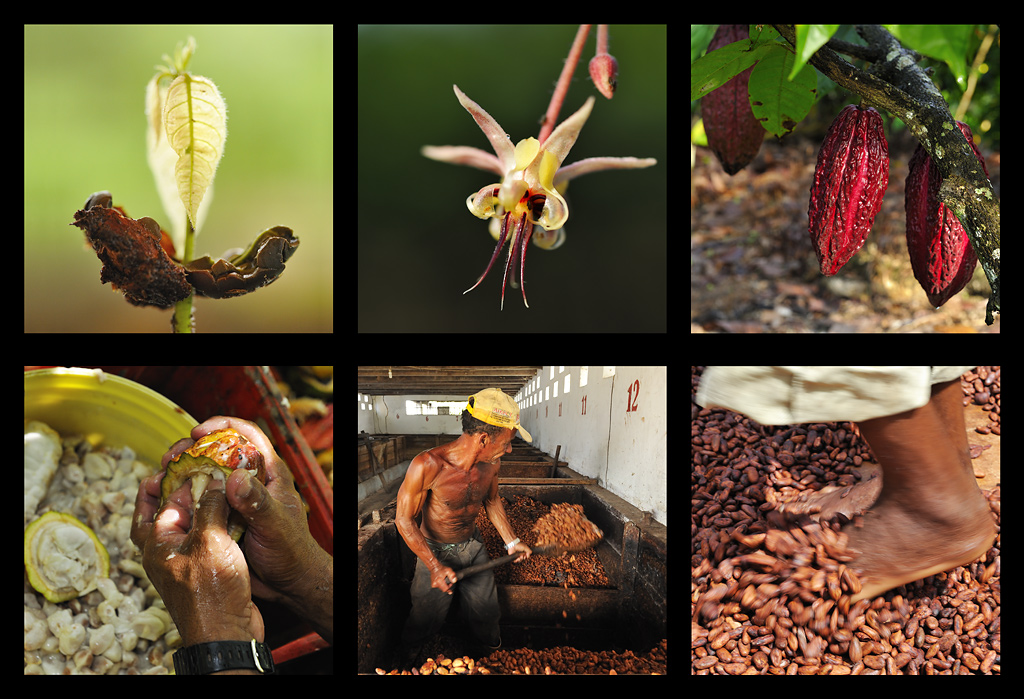
|
Cocoa
has been grown in the south of Bahia, Brazil since the late 17th
century. By the end of the 19th century, Brazil had become the largest
cocoa producer in the world. Twenty years ago, however, production fell
sharply and unexpectedly. Nevertheless cocoa still plays an important
role in Brazil and Bahia remains the biggest Brazilian cocoa-producing
state. Reason enough for me to visit a cocoa plantation in Bahia and
take a closer look at how cocoa is grown and processed! Why don't you
join me?
ON THE WAY TO THE COCOA COAST  Travelling
in a country the size of Brazil changes one's perception of distance
and dimention. So, without hestitating, I decided to drive the
relatively short distance of 1,800 km from São Paulo to
Itabúna in southern Bahia by car. I had allowed two full days of
driving for this. Large parts of the route lead through beautiful,
green, sprawling, blossoming, landscapes.
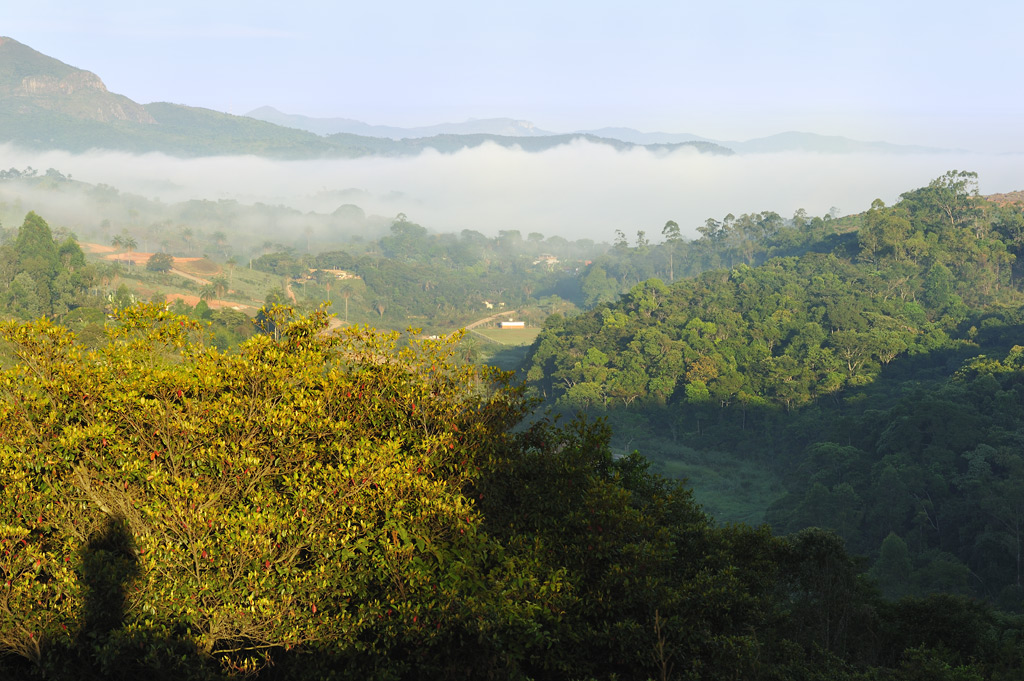 The roads are quite dangerous in parts, riddled with potholes of varying size and depth. Crazy truck drivers also present a hazard, especially in the dark. Since the largest part of the route is via single-lane country roads, I also had to contend with the presence of heavy trucks, making overtaking manoueuvres well-nigh impossible and adding a few more hours onto the journey time. Eventually,
about 100km from Ilhéus, there are increasing indications that
we are finally entering cocoa country: a road-side advertisement for
homemade chocolate (chocolate caseiro), a service station named „Cacau“, the first cocoa pods at a market stall and eventually the first cocoa street vendor.
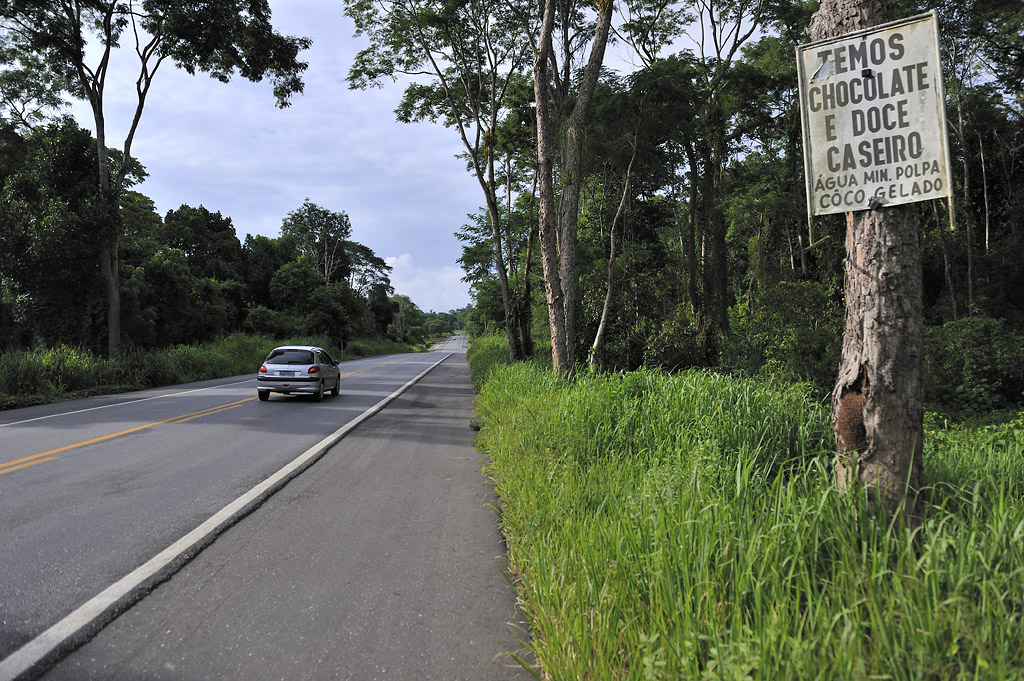
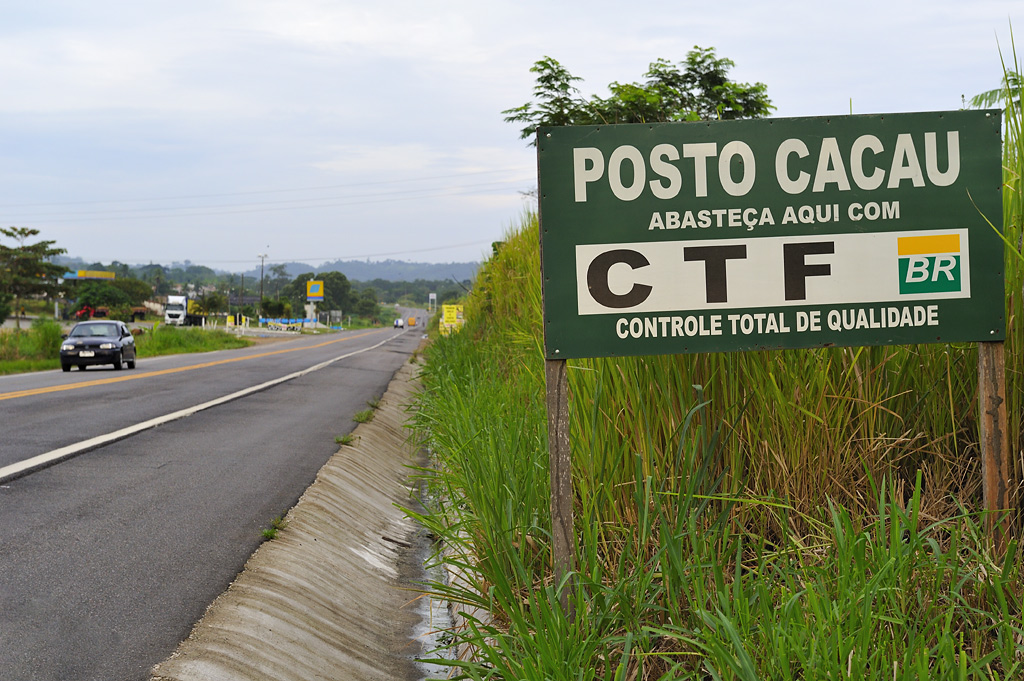 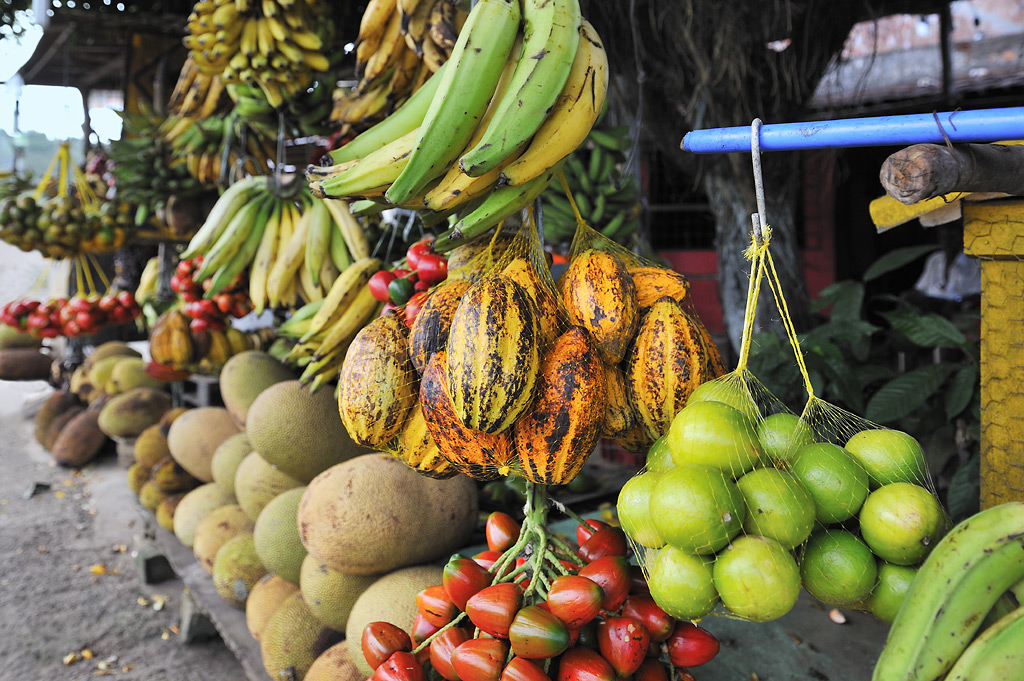
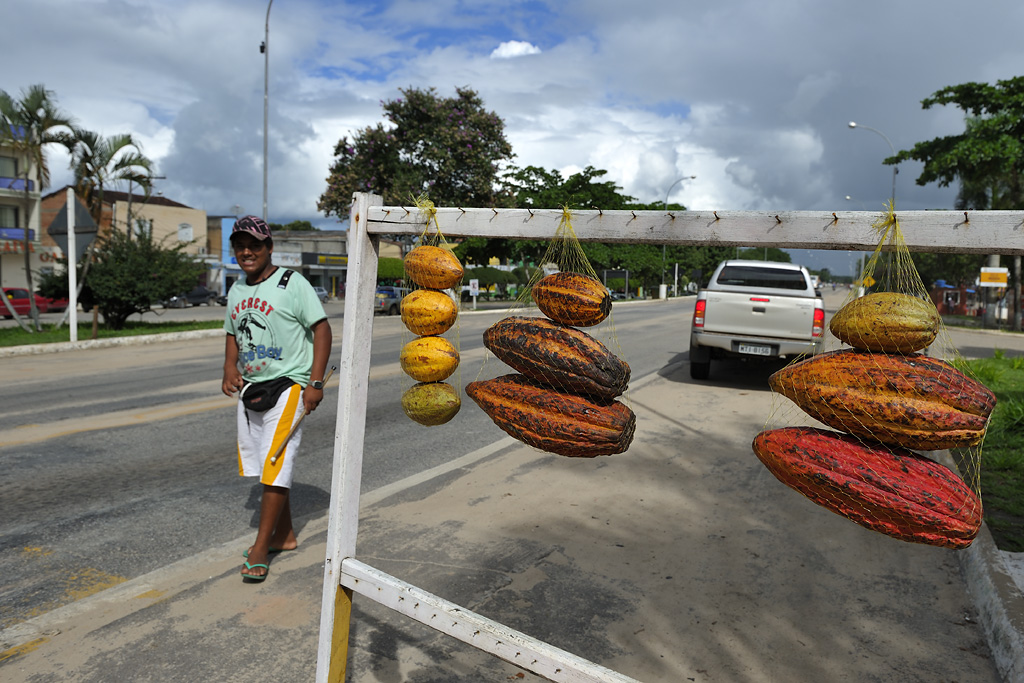 A short time later, I took the exit to the Cocoa Coast! The Fazenda Boa Sentença is located near the city of Itabúna, in the very heart of the cocoa-growing region in southern Bahia. 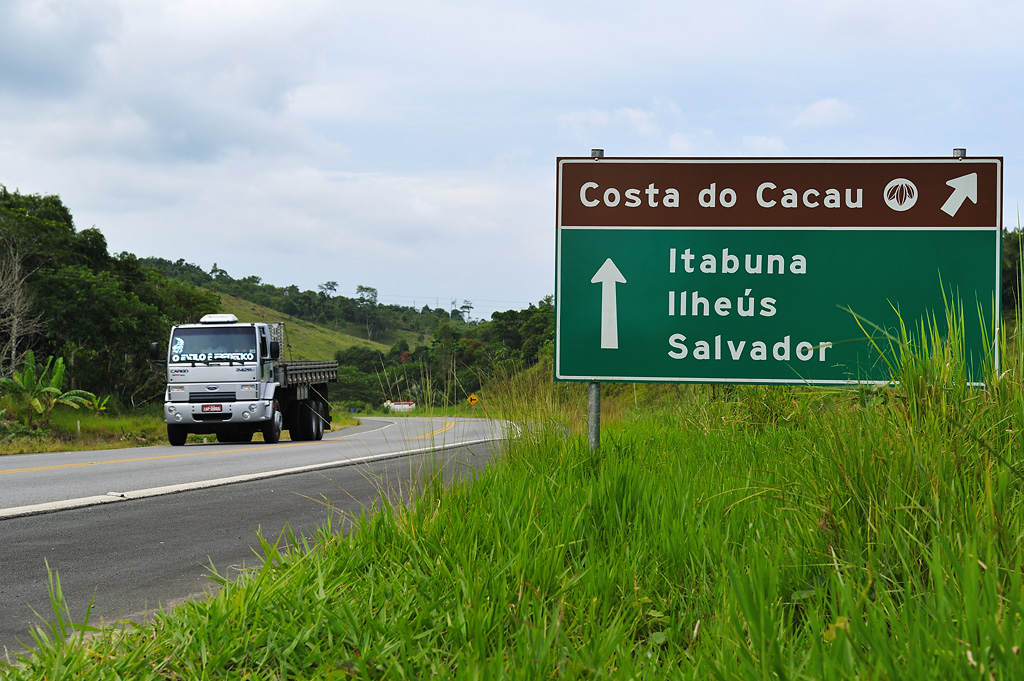 The route runs through the
district Ferradas, the birthplace of the famous
writer Jorge Amado. There the
city of Itabúna
has erected a monument to
him - he finally has, among others, written five novels on the
subject of cocoa, including one of his most
famous, the novel Cacau. The cocoa farm is located
about 10 km further away from Ferradas and is to reach only through a bumpy dirt road.
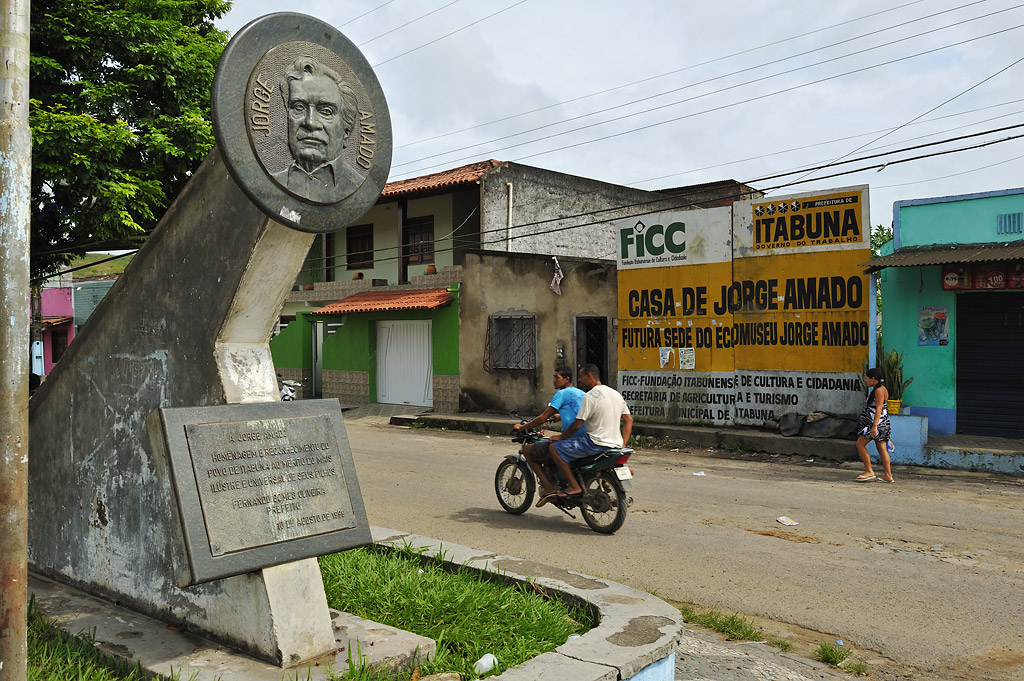 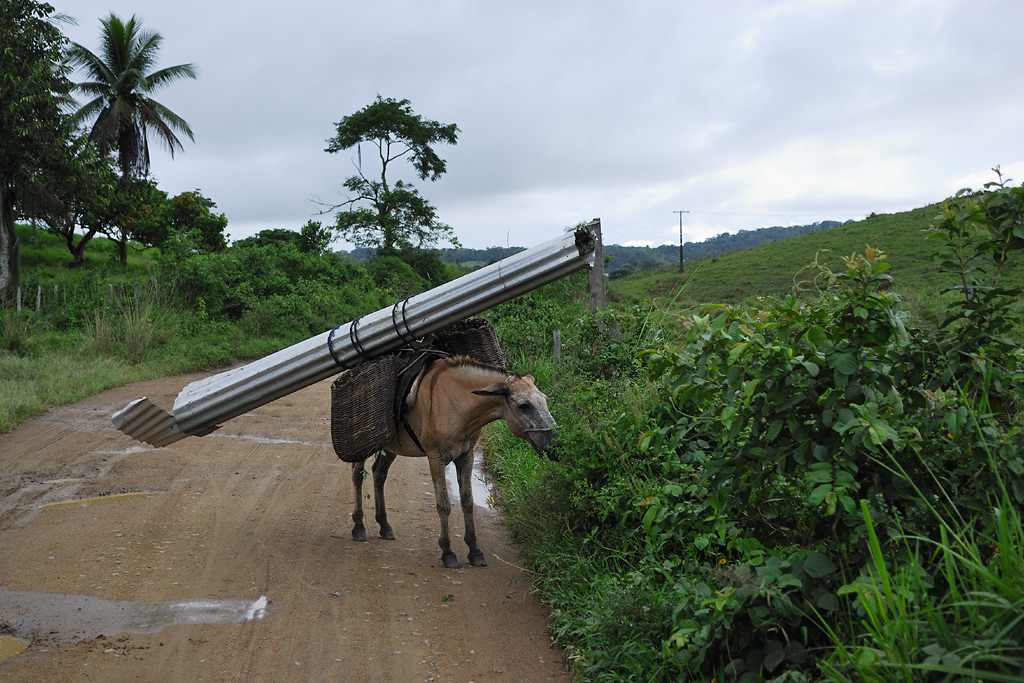 On the way to the cocoa farm Boa Sentença |
|
A CLOSER LOOK AT COCOA
Manuel is an experienced barcaçeiro. A barcaçeiro
is responsible for making sure the cocoa seeds ferment in their pulp
and dry well. During fermentation, tanin is released from the beans and
biochemical processes cause the temperature in the tanks to rise,
sending an intense, sweet-sour smell throughout the room and into the
hot, humid, tropical climate.
Throughout
the fermentation process, Manuel stands three to four times in the
middle of this warm, sticky, muddy mixture and restacks and moves the
heavy layers of cocoa seeds back and forth between the tanks. This
prevents mould growth on the cocoa seeds. "In time you get used to the
smell, I don't smell it anymore.", he says, and his wiry, well-trained
body reflects years of hard labour.
Manuel is one of 80 workers, all of whom live in small houses on the farm. The roofs of the houses are the so-called 'barcaças' (drying areas) - hence Manuel's job title - where the cocoa beans are dried in the sun. 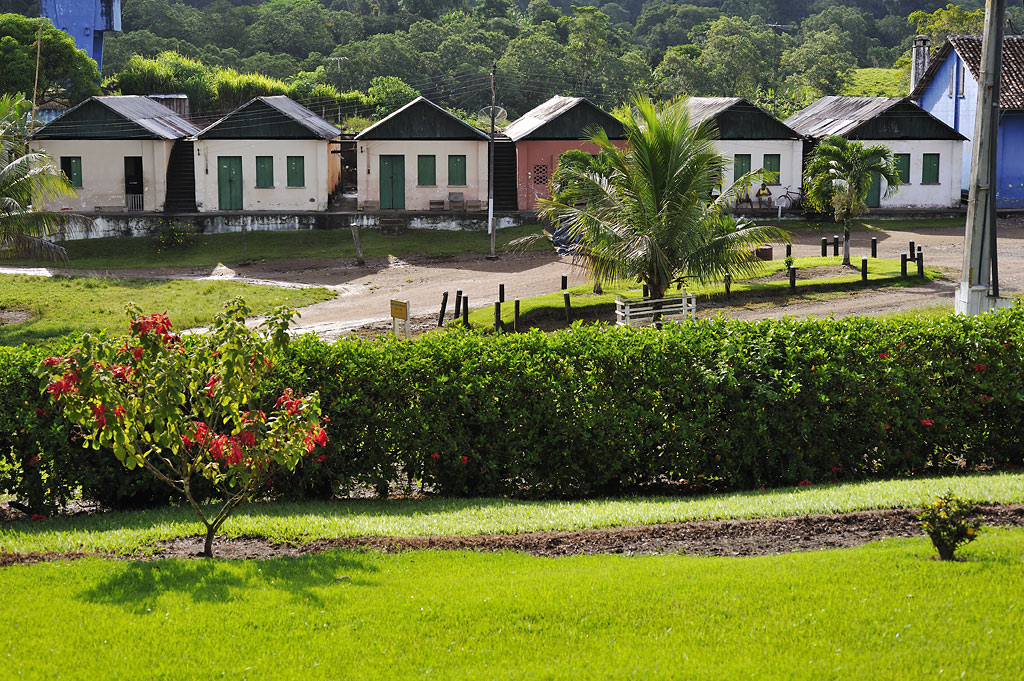 The "barcaças" are literally rooftops mounted on rails and are retractable. Every evening and whenever it rains, Manuel and the other barcaçeiros pull the roofs closed again. In addition to the houses with the "barcaça roofs" there are many other buildings on the farm complex: a church, a school, a barn, a stable and a well-kept football field. There is also a bus-stop in the middle of the farm, so people can get back and forth to Ferradas. 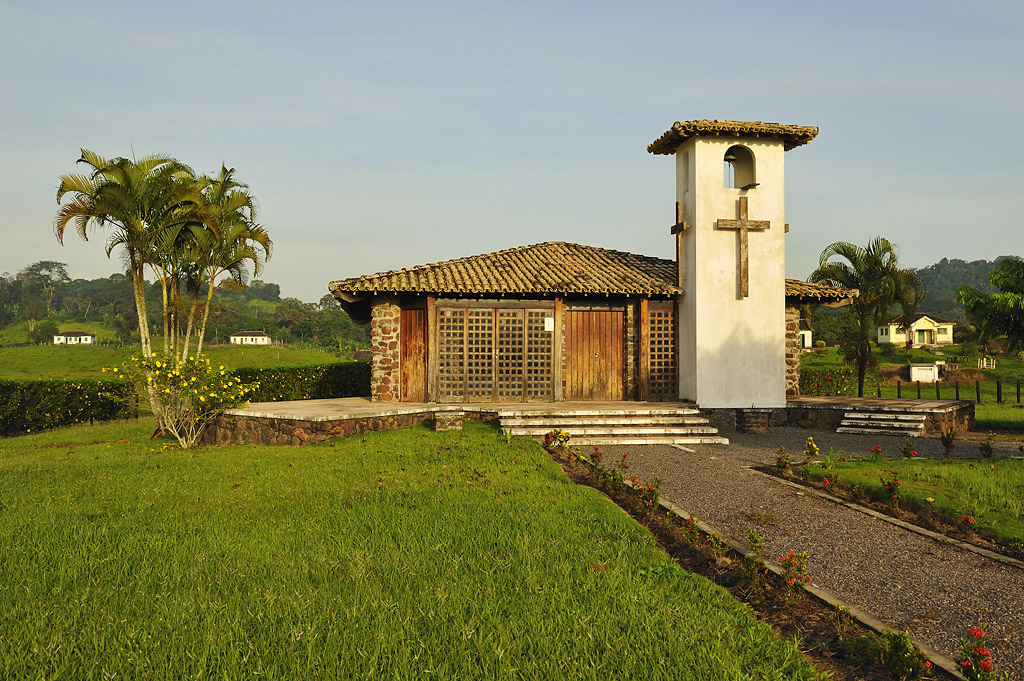
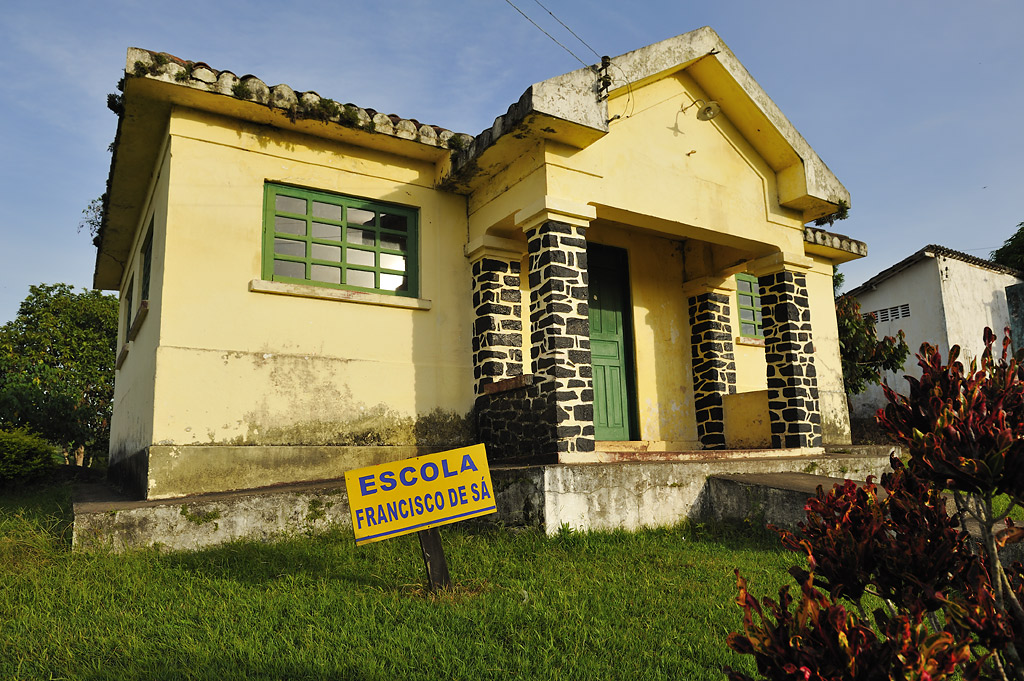 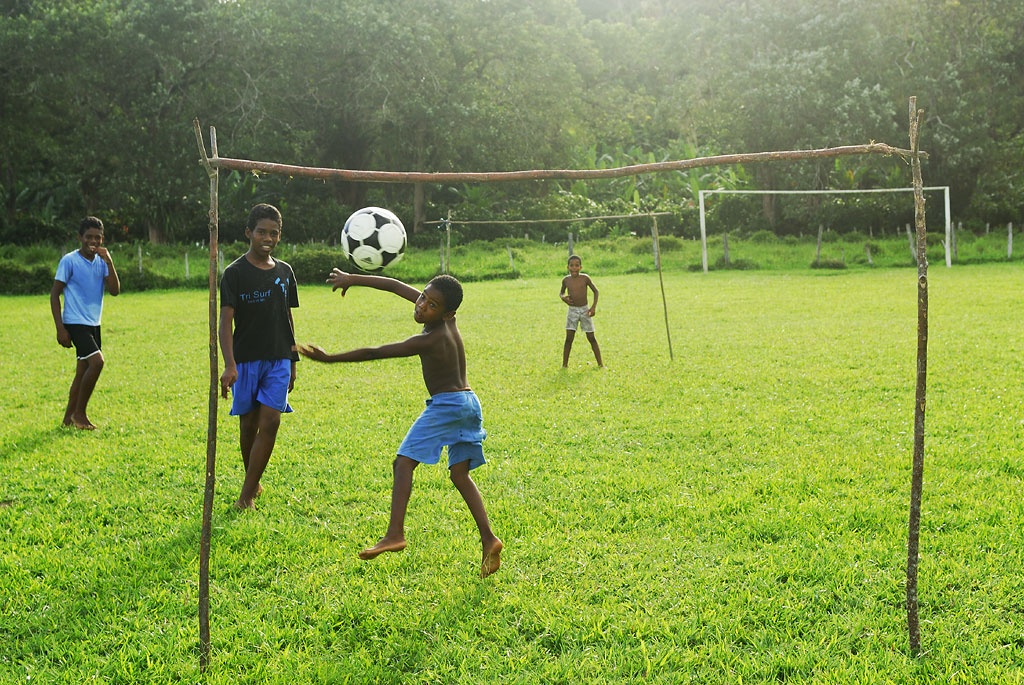
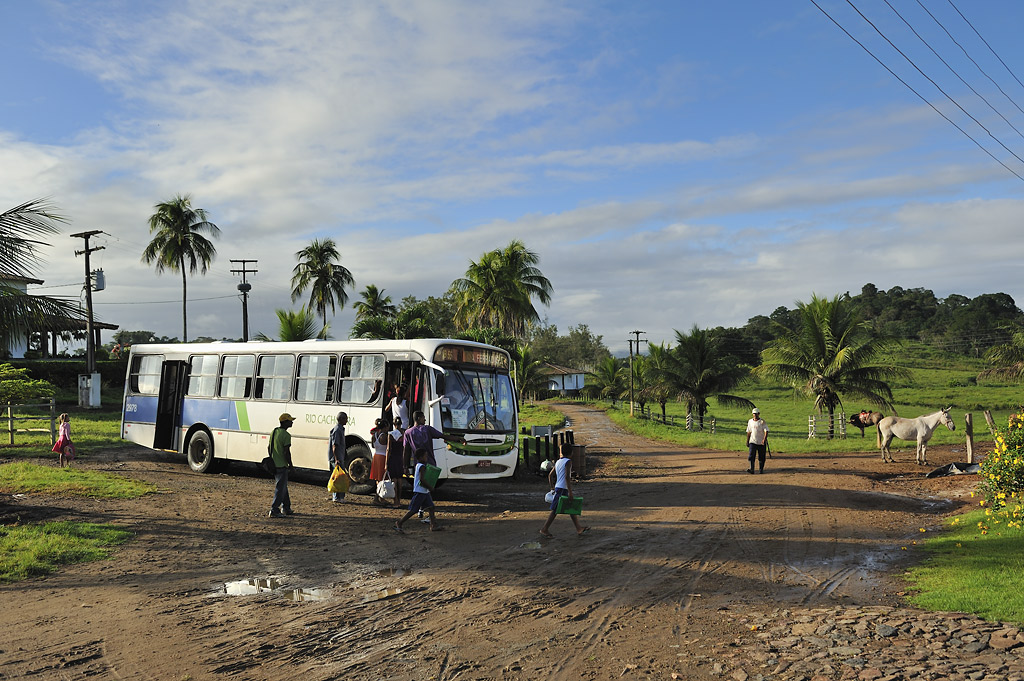 With a circumference of 14 kilometers, the plantation hugs the farm complex in the form of a horseshoe. From a distance the plantation is not recognizable as such. It looks more like an expanse of tropical rainforest. Cocoa plants require a lot of shade, which they obtain from a canopy of various species of trees and a large number of banana plants. 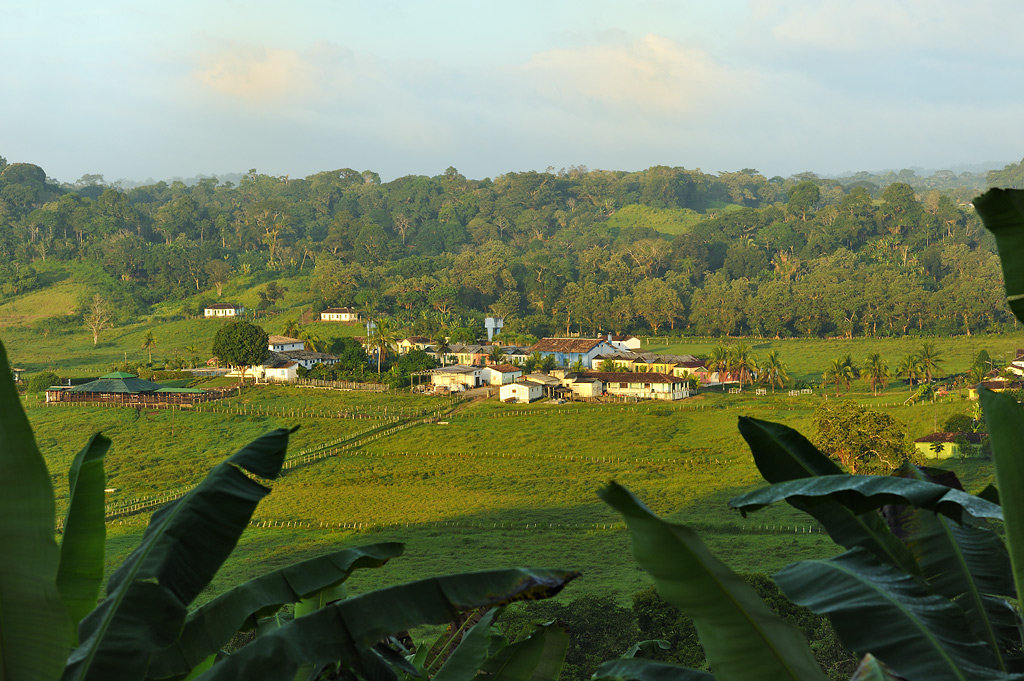 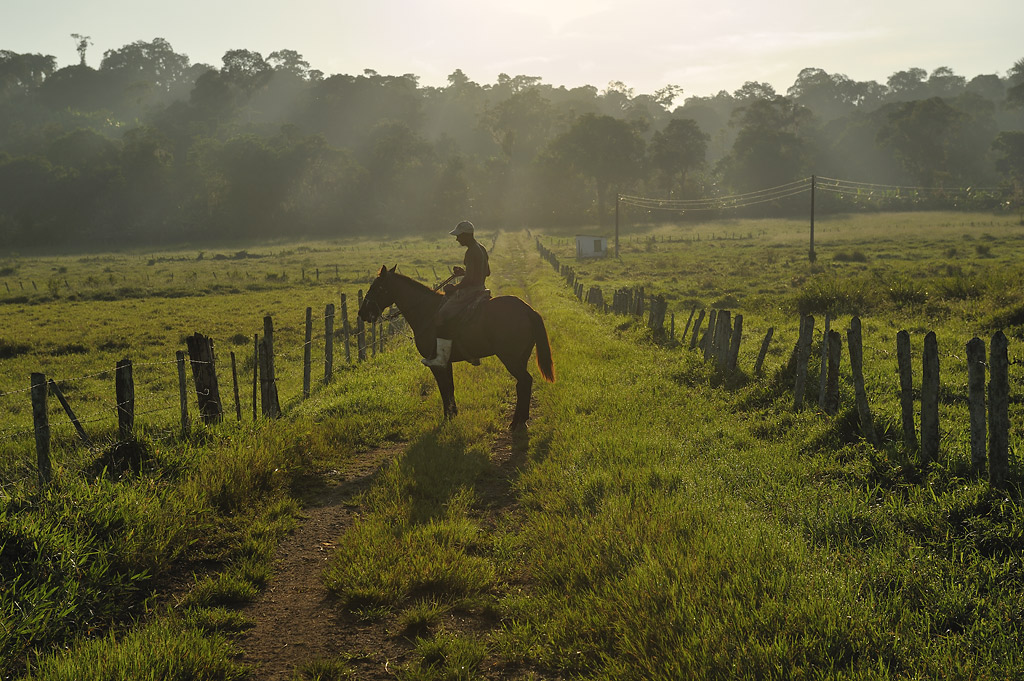 A SHORT HISTORY Although
the cocoa plant is native to the Brazilian Amazon, its
commercialisation dates from the 17th Century. The history of cocoa is
over 3,000 years old. The first evidence of its enjoyment dates from
the year 1100 BC and was found in food scraps on shards during
excavation work in Honduras.
„Nowhere else has Nature compressed such a wealth of valuable nutrients into such a small space, as it has in the cocoa bean.“ (Alexander von Humboldt) |